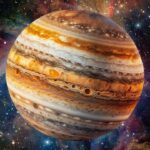Astronomy enthusiasts and sky gazers, get ready to witness a celestial spectacle as two large asteroids are set to pass by Earth in the coming days, coinciding perfectly with this year’s International Asteroid Day celebrations. The first of the pair, a staggering 7,600-foot long asteroid named (415029) 2011 UL21, is expected to make its journey approximately 17 times farther away than the moon on Thursday at 4:14 p.m. Eastern time. Astronomers have assured the public that both asteroids have a zero percent chance of impacting Earth, offering a rare opportunity to observe these cosmic visitors.
On the heels of this colossal asteroid, a smaller space rock identified as 2024 MK will approach Earth at a close distance on Saturday, zipping by at 75 percent of the distance to the moon. With a size ranging from 400 to 850 feet, 2024 MK was only recently discovered on June 16, emphasizing the critical need to enhance our ability to detect and monitor potentially hazardous near-Earth objects (NEOs). Despite its proximity, astronomers reassure that there is no immediate risk of collision.
Asteroid Day, observed annually on June 30, serves as a global platform to raise awareness about the potential impact of asteroid collisions on Earth. Founded in response to the film ’51 Degrees North,’ which explored a fictional asteroid strike on London, the initiative aims to foster a deeper understanding of the threat posed by asteroids and accelerate efforts to locate and study new objects in our solar system.
As we marvel at these cosmic marvels passing through our celestial neighborhood, it is a reminder of the ongoing need for vigilance and innovation in planetary defense. While the prospect of discovering giant space rocks hurtling towards Earth can be alarming, it is also a testament to the advancements in technology and international collaborations that allow us to track, analyze, and potentially mitigate the risks associated with NEOs. So, as we celebrate International Asteroid Day this year, let’s pause to marvel at the wonders of the universe and reflect on the importance of safeguarding our planet from potential cosmic threats.







